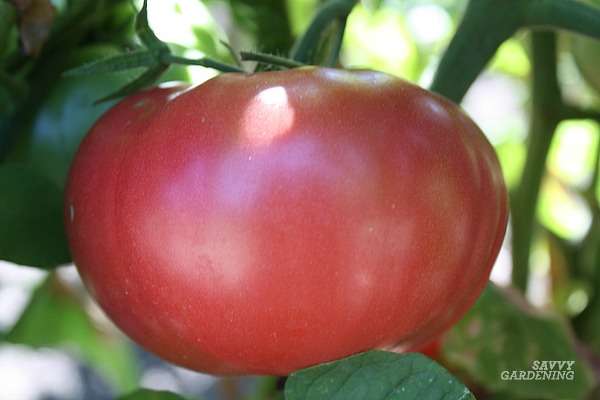Your cart is currently empty!

Tomato Growth Tips

There’s nothing better than a juicy, fresh tomato from your own garden. If you’re frustrated by your tomatoes’ slow growth, there are a few simple things you can do to speed up their development and produce more fruit sooner.
First, make sure the soil and air temperatures are warm enough to encourage healthy root growth. Tomato plants do best when soil temps stay reliably above 60 degrees.
1. Planting
Tomatoes are heavy feeders and need an organically rich, fertile, well-draining soil. Whether you’re planting in a garden bed, raised bed or container, choose a soil that’s high in humus and has plenty of organic material added at the time of planting.
Tomato seedlings need a few weeks to harden off before they’re ready to be planted outside. Once the air and soil temperatures have warmed to about 50degF, set your seedlings in a sheltered location outdoors for an hour or so a day until they are used to outdoor conditions.
Tomatoes are heavy feeders and require an organically rich, fertile, well-draining soup of soil to thrive. Adding organic material such as grass clippings, wood chips or mulch at the time of planting helps retain moisture and prevents weeds and diseases from splashing up on the plants.
2. Watering
One of the keys to successful tomato growth is getting the watering right. Too little and your tomatoes won’t thrive, too much and their roots will rot.
Young seedlings need plenty of water to establish deep roots. As they mature and their roots branch further into the soil, they require less from the surface.
Depending on the location, you may need to water several times a day or just once or twice a week. Always check the soil before watering.
Tomato plants grow best in sunny locations with well-drained soil. They can also be grown in containers and on patios, but they will need more frequent watering if they’re growing in pots or small areas.
3. Fertilizing
A successful tomato garden relies on knowing what fertilizer your plant needs at each stage of growth. This includes the three primary nutrients nitrogen, phosphorous and potassium (NPK) which are needed at different ratios at various points throughout the growing season.
Tomatoes are heavy feeders and need to be fertilize often throughout the growing season in order to thrive and produce a bountiful crop. But it’s important to understand that tomatoes are very sensitive to over-fertilizing, as excessive nitrogen can cause foliage burn and a lack of fruit production.
When planting seedlings, it’s best to add a slow-release, long-lasting fertilizer like compost into the planting hole. This will give the plant a great start as it’s building its root structure.
4. Pruning
Pruning is a crucial part of maintaining and promoting healthy plant growth. It stimulates new growth, resulting in larger and more abundant fruit and flowers.
When pruning, choose your cutting points carefully – prune just above a bud that points in the direction you want the new shoot to grow and at the height you wish it to start from. Don’t leave a stem stub (this could make it difficult for the plant to seal the wound) and don’t cut too close to the bud or branch, as this can damage the branch collar.
Pruning is a skill that can be learned and developed over time. The key is to understand your plants – and their purpose – to enable you to prune them correctly.
5. Harvesting
Harvesting tomatoes is an important part of the cultivation process, but it can be a delicate one. It’s essential that your staff is trained on the right techniques to ensure a smooth operation and successful harvest.
It’s also important to be patient and wait until the fruit is ripe to pick. Tomatoes need to be firm but not hard so that they are easy to remove from the vine.
To harvest, gently hold the plant above the stem of the tomato and pull it away. Do not twist the fruit off the vine because this can break it.
by
Tags: